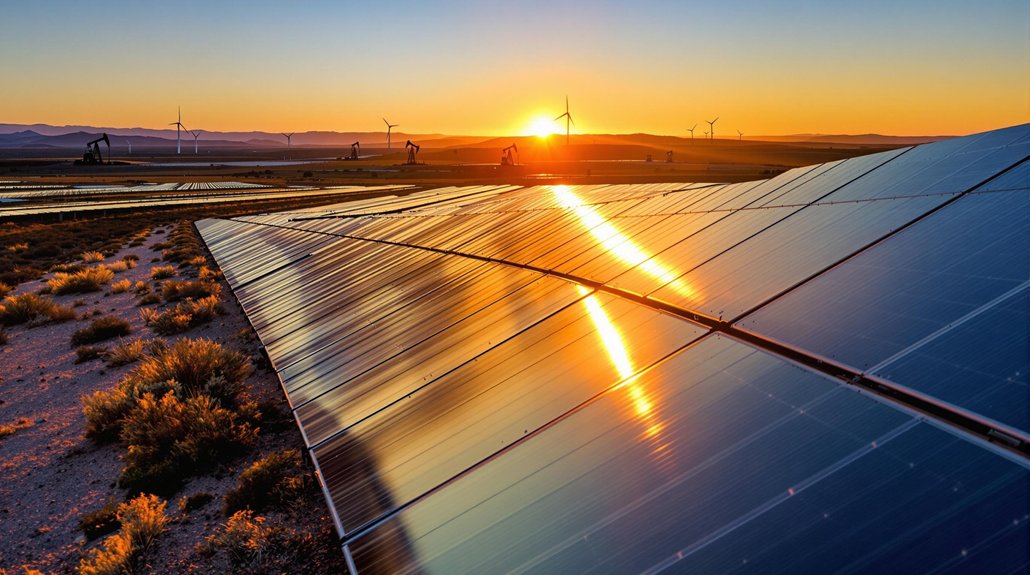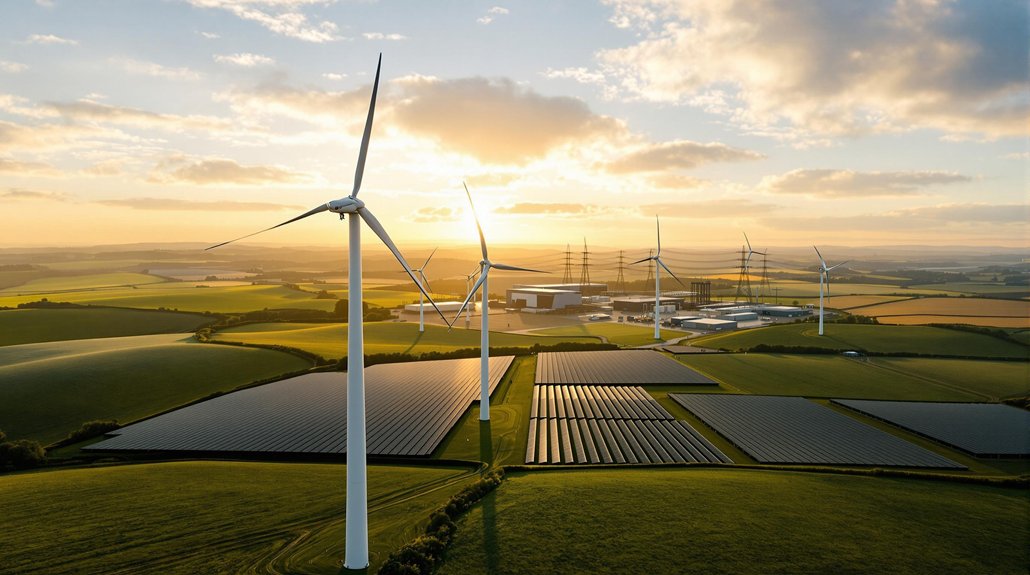Southern California’s landscape is changing fast. Oil pumpjacks are out; solar panels and wind turbines are in. The 600MW projects aren’t just eco-friendly window dressing—they’re economic powerhouses generating $18 million for local communities. Kern County, once oil country, now produces 71% of California’s renewable energy. Jobs in solar outpace fossil fuels, period. Even with desert ecosystem concerns, this green revolution keeps powering forward. The numbers tell the real story.
The transformation is unmistakable. Where oil pumpjacks once nodded endlessly across the landscape, sleek solar panels and wind turbines now stretch toward the horizon. Southern California isn’t just going green—it’s racing there at breakneck speed. The recently launched 3.8 MWdc Sheep Creek Community Solar Farm in Adelanto marks a pivotal moment as the first project under California’s Enhanced Community Renewables program, bringing solar power to 241 subscribers who couldn’t otherwise access it. This initiative specifically aims to serve low-to-middle-income residents traditionally excluded from renewable energy options. Renters and homeowners with unsuitable roofs? They’re finally invited to the party.
The era of oil pumpjacks gives way to solar fields, inviting everyone—even renters—to California’s renewable revolution.
These projects aren’t just feel-good environmental tokens. They’re economic powerhouses. The Eland 1 Project alone will pump $18 million into local government coffers. That’s money for schools, firefighters, and infrastructure—not exactly trivial stuff.
And jobs? Construction crews and local businesses are riding this green wave all the way to the bank. Solar power contributes to job growth outpacing fossil fuel employment while strengthening local economies.
Kern County has become California’s renewable energy superstar, generating a whopping 71% of the state’s green power. By 2021, over half of the county’s electricity came from renewable sources. Not bad for a region once synonymous with oil production.
The tech isn’t standing still either. AI-powered robots are speeding up construction while battery storage—we’re talking massive 150-megawatt/600-megawatt-hour systems—means solar energy doesn’t disappear when the sun does. Revolutionary concept, right?
Not everyone’s thrilled. Desert ecosystems don’t exactly evolve alongside solar panels, and some counties have slammed the brakes on utility-scale development. The classic battle between immediate environmental impact and long-term climate goals rages on.
Looking ahead, the future’s blindingly bright. Eland 2 is set to launch in early 2025, with the combined Eland projects generating 758 MW. Arevon Energy has 4,500 MW of projects across 17 states, with another 6 gigawatts in development. These renewable initiatives align with California’s 2045 goal of achieving 100% renewable energy use across the state.
California’s 2045 all-renewable goal seemed laughably ambitious once. Nobody’s laughing now.








